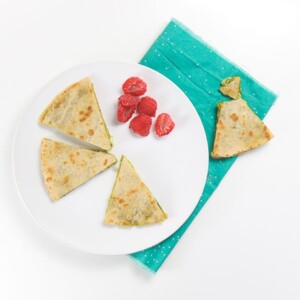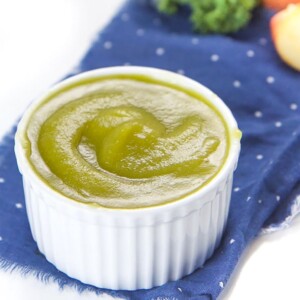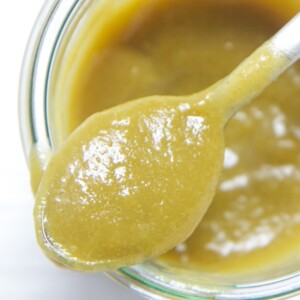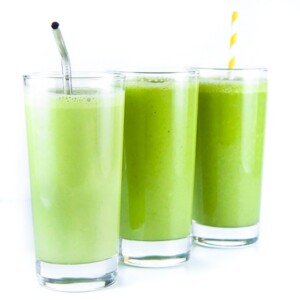Kale Profile
Medically reviewed and cowritten by Jamie Johnson, Registered Dietitian Nutritionist (RDN).
Kale Benefits
Eat More Kale – you hear it everywhere. And for good reason! This leafy green is high in essential nutrients, fiber, and protein. This pretty veggie even has more calcium by weight than cow’s milk. Who knew you could get calcium for healthy bones and teeth by eating a dark, leafy green? Older kiddos can enjoy crispy baked kale chips, while your baby can eat it as a puree or in a creamy fruit smoothie. There are so many delicious ways to enjoy this nutritious veggie!
Health Benefits of Kale
Kale is known as a “superfood” because of all of the nutrients it contains, notably, it is:
- High in vitamin C which is essential for iron absorption and immune health.
- Great source of vitamin K, necessary for bone health and blood clotting.
- Contains calcium for healthy bones and beta-carotene for healthy eyes.
Highlighted Nutritional Importance of Kale
Vitamins
Vitamin A – a crucial vitamin for vision and bone growth
Vitamin C – this vitamin helps heal small cuts and wounds, boosts the immune system, and keeps infections at bay
Vitamin K – is vital for the blood clotting process and for bone health.
Vitamin B6 – is essential for metabolizing protein, fats, and carbohydrates and is vital to your baby’s developing brain
Minerals
Calcium – crucial for building strong bones and teeth and activating enzymes that convert food into energy
Iron – needed to make hemoglobin, the protein that carries oxygen through our blood. Vitamin C aids in the absorption of iron – kale is rich in this vitamin
Potassium – this mineral works with sodium to help control water balance in the body, which helps maintain a healthy blood pressure
Magnesium – essential for maintaining strong bones and a steady heart rhythm
Doesn’t Kale have Oxalates?
Oxalates are naturally occurring substances found in plants, animals, and humans that are indigestible to humans. They get a bad rap because they bind with vitamins and minerals in our bodies, making absorption much harder. Contrary to popular belief, kale is quite low in oxalates, especially when compared to spinach. Kale has 20 mg of oxalic acid per 100 g of kale, but spinach has 970 mg per 100 g of spinach. That’s quite a difference! With oxalate levels so low in kale, there should be little to no concern feeding baby this healthy vegetable.
How to Select and Store Kale
If possible, kale should be purchased organic to avoid insecticides that are toxic to the human nervous system.
Kale comes in two main varieties – kale with flat, smooth leaves or curled leaves. The flat-leaf kale, known as dino or lacinato kale, is sweeter than curly or purple kale. When choosing kale for your baby at the grocery store or farmers market, it’s important to look for firm, moist, deeply colored leaves without yellowing or browning. Baby kale is a great choice for your baby since it is more tender and has a sweeter taste than the other varieties. Kale is kept in the refrigerator for about 5 days, but try to consume it as quickly as you can to avoid increased bitterness.
When it comes to preparing kale for baby, there are many tasty options! You can cook and puree it with a bit of sea salt, or add it to a creamy fruit smoothie. Baked kale chips are also a fun, crunchy way to incorporate this healthy veggie into your kiddo’s diet.





